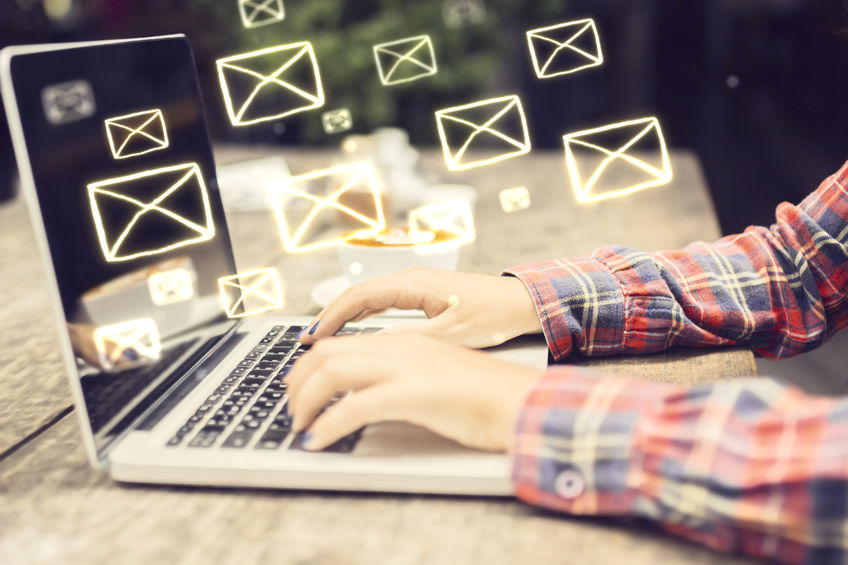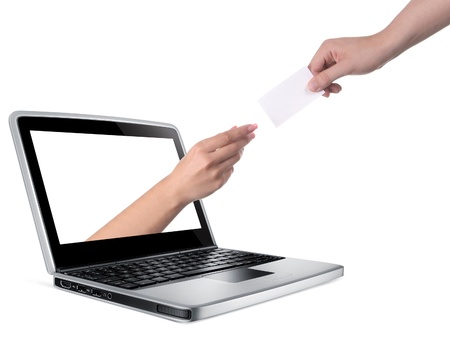Using Email Etiquette for
Positive Information Sharing

Sharing information is what binds us to others. You want to be friends with and work with people you know, like, and trust and communication is what builds these relationships.
Email is currently one of the most-used forms of communication. It's not always as formal as a written letter, but reaches the recipient much faster and is accepted and appreciated in professional communications.
However,
like most electronic communications that help you reach someone at
lightning speed, email etiquette asks us to consider the tone and
formation of our words so they fit with the situation at hand, and your
relationship with the recipient.
The Context of Email
Email communication calls for clarity and asks us to be concise. There is an old sentiment that goes, “Come on, I don’t have all day!” When people open email they aren’t looking to be inundated and your message might not reach patient eyes.
Unlike a handwritten letter, which is usually read and savored to take in each bit of information, email is delivered quickly and read quickly. Thus, the extra call for conciseness as a show of respect for the person who opens our email messages.
We send emails when we:
- Want to share news and information.
- Congratulate someone.
- Invite someone to or announce a meeting.
- Introduce or recommend a colleague or client.
- Convey a sad or a happy event.
Of course, it's important to remember that email doesn't replace the need to send personal notes or invitations via postal mail. And there are times when a phone call may be the better way to communicate the information you intend to share.
Email Etiquette Guidelines
The tone of the words you type are the first email etiquette issue to address. When speaking on the phone or in person, we can hear the inflection of the words spoken. But the tone of written words, particularly those read quickly, is usually an assumption.
Aim for a civil and respectful tone in your emails:
- Keep the message free of attempts at humor or innuendo.
- Beware of sarcasm and impatience, which never serves well.
- Acknowledge a "thank you" or show of appreciation early in your email.
- Convey your feelings and sentiments directly in a positive way.
- Make delegations or requests a bit softer to ensure respectfulness: “Could you please?” rather than “I need you to… ”
It helps greatly to write a draft of your email then read it aloud. Hearing it for yourself will usually help pick up any question of tone and you'll have a chance to edit appropriately.
Also, check spelling, grammar, redundancy, and priority.
Be sure each element of your email hits its mark.
- Include a short subject line - eight words or less is the aim. Use the words "important" and "urgent" carefully. If you use these descriptors too often, you'll ruin their sincerity.
- Ensure your greeting salutation is appropriate to the time, place, and relationship: "Dear Thomas," "Dear Mr. Ranger," "Hi Rene."
- Include a short introduction statement: "I hope this message finds you well." "The last time we spoke was over lunch in Santa Monica."
- State your purpose for writing: "I'd like to set up a time to meet regarding the Bowen project." "I have some exciting new to share with you!"
- End with a closing statement: "Sam, I appreciate you taking the time to consider these ideas." "Perhaps we could get together to share more about what you're up to and how I might assist you."
- Sign off. "Best regards," "All the best," and "Sincerely" still serve the purpose. And, especially if your email is work-related, make sure you include an email signature with your company and contact information.
If there are several replies creating an email chain, each reply may not have all the elements listed above. But including them in your initial communication, particularly in a professional contact, will create a positive and polished impression.
Additional guidelines to consider:
- If you are one to use exclamation points to express yourself, try and reign in this habit. Overusing them will make your message appear insincere or immature.
- Keep your message genuine and factual. Exaggeration can compromise trust, something you never want to lose.
- If you need to discuss something personal or of a sensitive nature, it's best to use your email as a request for a phone call or meeting.
- Always aim to reply to an email within 24 hours, even if the reply is only to let someone know you'll get back soon.
- When at work, be aware of time zone differences and try to send your emails within business hours if possible.
- Realize that others may forward your message. Never put anything in writing or email that you don't want the world to see!
- Regardless of how you think it reads, setting your message aside for a while ensures that it will be mistake-free and that you’ve said what you want to say.
Email is a wonderful and convenient communication tool. But don't let its convenience and quickness distract you from appropriate communication guidelines. Employing email etiquette ensures your message is received with the spirit in which it was sent.














